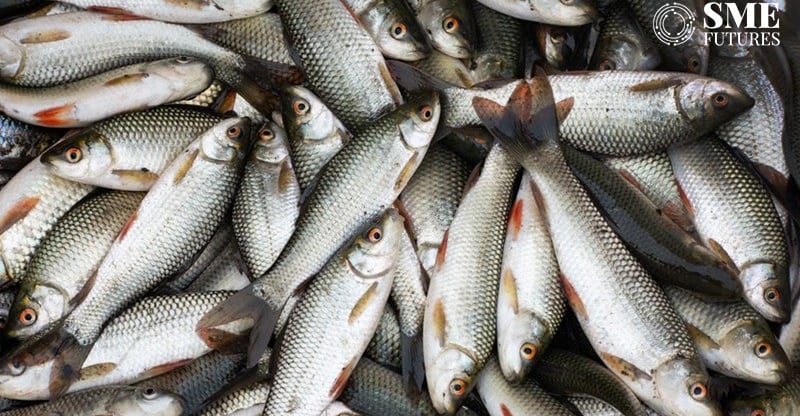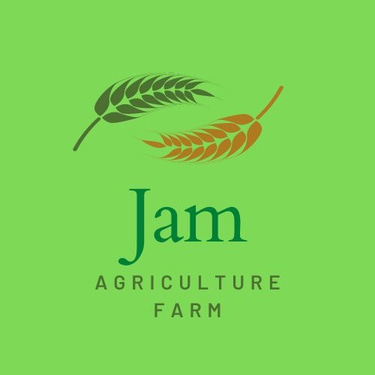Fish farming business
Fish farming Business Guidelines for Site Selection Pond Designing, Management Strategy Economics and other Aspects of fish farming This article provides essential technical information for the person interested in the fish farming business
FISH FARMING
FISH FARMING
Fish farming business guidelines for Site Selection Pond Designing, Management Strategy Economics and other Aspects of fish farming. This article provides essential technical information for persons interested in the fish farming business. We will discuss step-by-step recommendations to follow for successful aquaculture.
Every site is not suitable for aquaculture, and everyone should not get into the fish farming business. The farmer should examine his resources, both site-specific and financial, before starting fish farming. If the site is suitable and good management is practised, fish farming will provide a good economic return as well as an important high-quality protein source for the rapidly increasing population of the country.
Site Selection
Special attention may be given to the location of the proposed fish farm. The farm should be located in an area that is not subject to flooding, have enough elevation that it can be dried during the dry season, have the proper soil, have a good water supply, have market road access, and be away from the spray application of pesticides. The proposed fish farm site will require a natural slope by allowing the water to flow as much as possible by gravity, and by the least amount of soil excavation for the proposed ponds.
Soil Sampling
Soil samples should be taken from the surface, and from a depth that will represent the bottom of the ponds and slightly below. At least one kg of soil in the head of the auger is placed in a plastic bag and taken. The bag should be labelled with the name of the farm, the location, and the depth at which the soil sample was taken and then send to the nearest soil testing laboratory. Clay is most desirable for water retention in the fish ponds. Total alkalinity, pH, total nitrogen, salinity, and total dissolved solids (conductivity) are to be assessed by laboratory tests. Alkalinities greater than 100 mg/liter and pH greater than 7.5 is a desirable characteristic for fish culture.
Types of Pond
There are four types of fish ponds: barrage, excavated, elevated and combination excavated/elevated.
Barrage pond: These types of ponds are most appropriate in hilly areas. This type of pond is constructed by buildings a dam across a low point in a valley. The barrage dam captures the surface runoff, and a crop of fish can be raised in this water.
Excavated Pond: These are most appropriate in low-lying areas. Often this type of pond will not be drainable because of natural seepage into the pond. Because of the inability to dry the pond bottom, these low-lying sites are generally the least preferred to build the fish farm.
Elevated pond: This can only be built when the soil contains high clay content. The water supply almost always has to be pumped.
Excavated/Elevated ponds: The most appropriate pond type is the combination of excavated/elevated pond. If the soil has sufficient clay content, the dikes can be built from the soil that is removed during pond excavation, thus excavation costs are minimized.
Size of Pond
The fish-growing ponds should be from one acre to two-and-a-half acres area. The nursery ponds should be from two to eight Ghunta. The total nursing pond area should be one-sixth of the total production area.
Pond Design
A rectangular-shaped production/nursery pond is most desirable as it can be managed easily. It can be constructed by excavating 2 to 2.5 feet of soil and then elevating it up to 4.5 to 5.0 feet. The crest of the embankment should be 10-15 feet and the inner slope 1:2. The depth of production ponds should be 6.5 - 7.5 feet and the Nursery pond should be 5.5 - 6 feet.
Water Quality and Quantity
Water sourced from a tubewell is better. But in Sindh, Irrigation canal water is used to fill the pond. Canal water comes from the catchment area of the drainage; thus it carries high loads of silt and is subject to changes in environmental conditions and water quality. It may also carry a large number of trash/carnivorous fish.
The green colour is most desirable, maintained by the addition of fertilizers when the green starts to fade to a light brown. Water quality should be managed for the fastest fish growth and optimum fish health. In the presence of phytoplankton, photosynthesis increases as the sun rises. With the increase in photosynthetic activity, pond chemistry changes: carbon dioxide is consumed and oxygen is liberated in this reaction. The gathering of fish at the surface particularly during the daytime is an indicator of oxygen depletion in the pond water, it should be rectified forthwith through the addition of fresh water.
Fertilization
A fertilization program should be implemented to develop and maintain a robust algal bloom throughout the year as the primary source of food for all of the Major/Chinese carp. Nitrogen and phosphorus are the primary nutrients required to stimulate phytoplankton growth. In Pakistan, we have two sources of organic fertilizers, chicken and cow manure. The inorganic fertilizers are Urea, Di-ammonium Phosphate, single super phosphate, ammonium sulphate and Nitrophos.
Different fertilizers require different application procedures: manures should be spread evenly throughout the pond prior to filling. The inorganic fertilizers urea and others can be placed directly into the pond water; Diammonium Phosphate should be mixed with water in a bucket or basin and dissolved prior to distribution in the pond.
Fertilizers should be added on regular basis throughout the warmer months to sustain the plankton bloom.
Stocking
Rohu, Mori, Catla (Thaila), Silver carp, and Grass carp may be stocked in a pond with a ratio of 3.1.1.2.1. To obtain a final weight of 1000-1200 kg of 1.5 kg fish per surface acre, 750 fish per acre are required at harvest. Allowing for a maximum of 10% mortality, 825 fish per acre is to be stocked. Fingerlings are required to be at least 100-150 grams each.
Feeding
Four rules should be followed when feeding fish. First, a regular feeding schedule must be followed. Second, the quantity of feed given must be calculated by the farmer based on actual sample weight data collected at the end of each month. Third, the fish must be fed at the same time each day, and at the same place in the pond. Fourth, the farmer must carefully observe feeding behaviour and determine the extent to which the fish are consuming the feed given.
The most common supplemental feeds used in Pakistan are rice bran and polishing. A simple mixture of rice bran or polishing and any of the oilseed cakes commonly available can also be used. The addition of fish meal further improves the nutritional value. Rice bran/ Rice Polish/ Wheat bran is recommended for feeding (daily) 2-3% of the body weight of fish in the production pond. Maize gluten 45%, Sunflower oil cake 45%, Fish meal 5% and Molasses 5% at 3-5% of body weight may be given to fish seed in Nursery Pond. The feed should be mixed with enough water to form a sticky ball.
The natural diet of grass carp larger than about 30 mm is exclusively macro vegetation, initially tender aquatic weeds, and later, other aquatic vegetation. However, the most common method is to cut grass and feed it directly to the fish in the pond.
ECONOMICS OF ONE-ACRE FISH FARM
Capital Cost
Bulldozer Tractor Excavation/compaction of pond embankments. Rs. 60,000/- to 80,000/-
Cost of water channel Rs. 30,000/- 30,000/-
Miscellaneous Rs. 10.000/- 10.000/-
Total A Rs.100.000/- 120.000 /-
Recurring Expenses
Initial filling and subsequent Replenishment of water Rs. 60,000/.
Cost of fish seed Rs. 6,000/-
Manure / Fertilizers Rs. 35,000/-
Supplementary feed Rs. 15,000/-
Fodder for grass carp Rs. 8,000/
O&M and other charges Rs. 24.000/
Total “B” Rs.148.000/-
Gross Income (1300 kg fish @ Rs.200/- per kg) Rs. 2,60,000
Net Income (Gross Income - Recurring expenses) Rs. 1,12,000
Note: The installation of a tubewell and employment of full-time personnel for a one-acre fish farm is uneconomical. However, a commercial-scale fish farm of 8-10 acres is economically viable.




